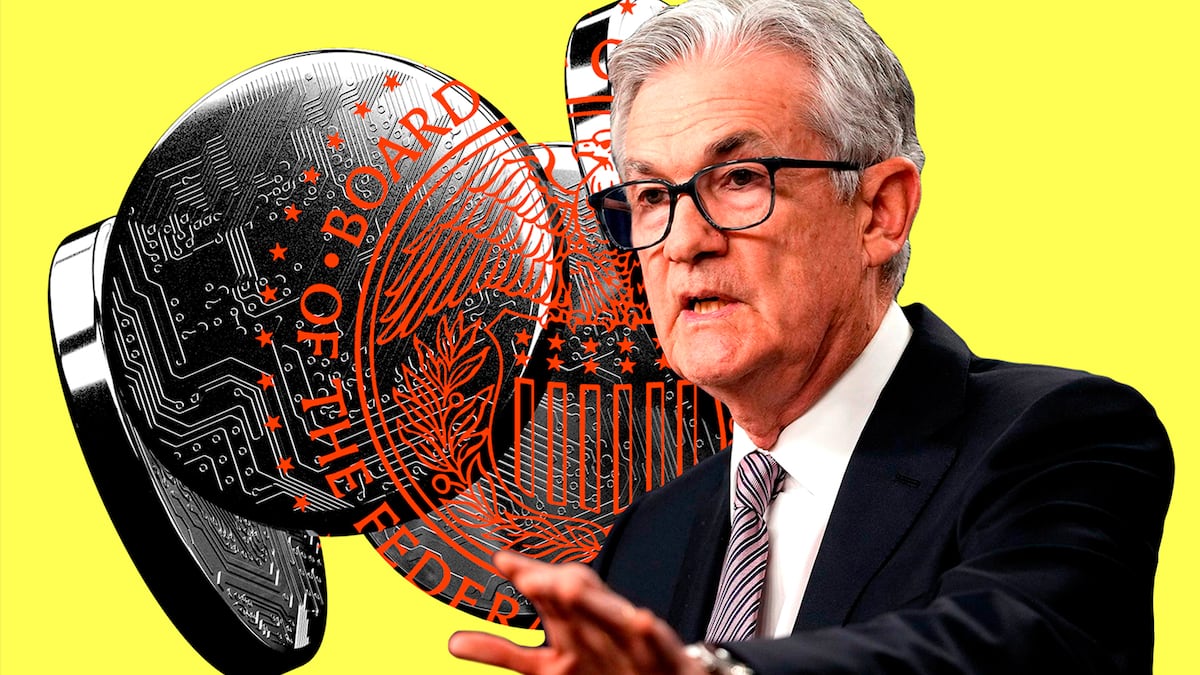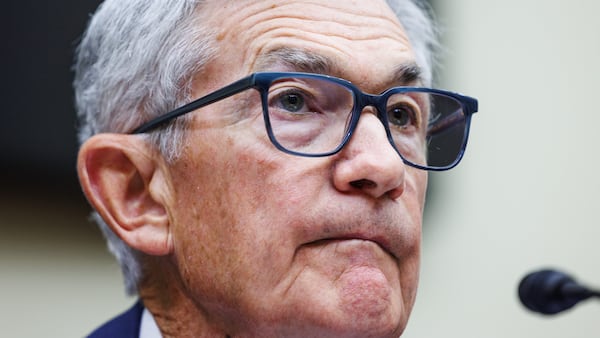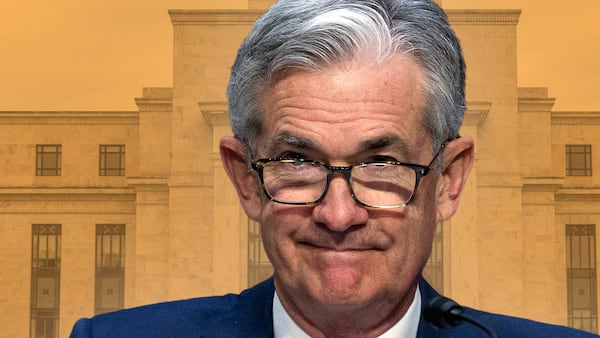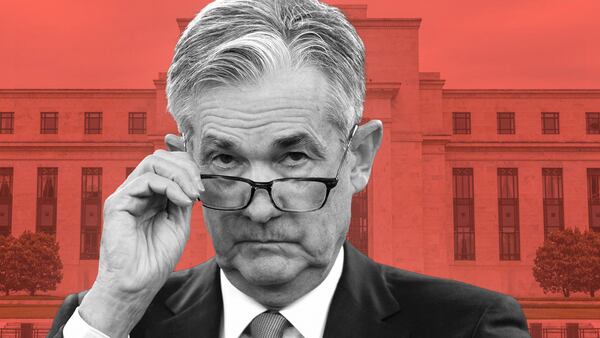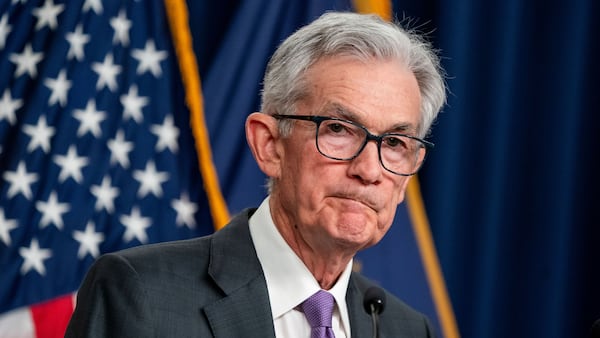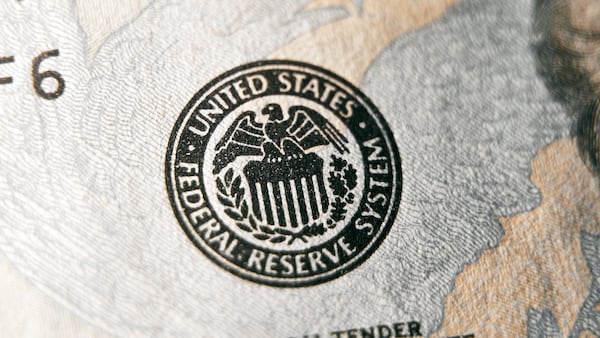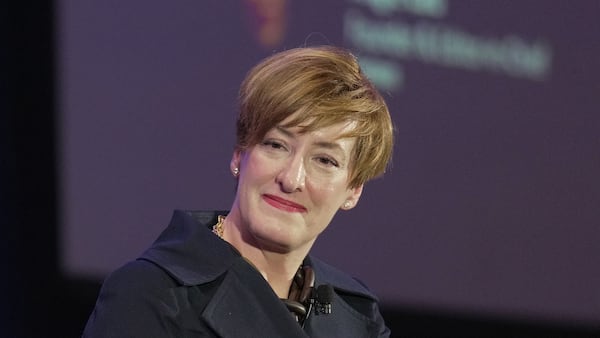- 'The time has come for policy to adjust,' Fed Chair Jerome Powell said Friday.
- Interest rate cuts won't be deep — especially in real terms.
- Issuers of tokenised treasuries don't see the cuts as a major threat.
Federal Reserve Chair Jerome Powell on Friday essentially confirmed what traders already knew: Interest rate cuts are coming.
Still, businesses that offer or rely on tokenised treasuries, which benefit from high interest rates, needn’t worry, market players told DL News said earlier this month.
That lack of concern prevails now that Powell has all but confirmed interest rate cuts, according to issuers of tokenised treasuries.
In the decade before the Fed began raising interest rates to combat inflation, there wasn’t much difference between holding cash and holding treasuries, Jim Hiltner, head of business development at Superstate, told DL News.
“Now, obviously there is, and I believe that that will continue to be the case,” he said.
Issuers of tokenised treasuries include multitrillion-dollar asset managers BlackRock and Franklin Templeton, as well as firms with a background in crypto like Superstate.
With $117 million in assets under management, Superstate, which launched in January, is the fifth-largest issuer of tokenised securities.
“You have an incentive for the Federal Reserve to continue to have a tight-ish environment with high-ish rates, but they’re not going to bring them back to zero in the next six months. It’s just not going to happen unless the economy falls off a cliff.”
Mission accomplished?
Interest rates hovered just above zero for several years after the Great Recession. Although they began to creep up during the presidency of Donald Trump, they shot back down to near-zero when the pandemic hit, with policymakers pulling out all the stops in an attempt to prevent economic calamity.
The subsequent recovery was much faster than they expected. Coupled with lingering, post-pandemic supply chain issues, prices began to skyrocket. The Federal Reserve, tasked with balancing stable prices and low unemployment, raised interest rates to their highest point since mid-2007.
The effective federal funds rate — the median interest rate for overnight loans between US banks — hit 5.33% a year ago and has stayed there since.
The high rates hobbled DeFi projects, whose relatively high risk was no longer worth their yield. But it was a boon to projects that invested in treasuries such as MakerDAO.
Yields from those treasuries has hovered above 5% — a lucrative and safe way to earn from assets that would otherwise be sitting dormant.
In just a few months, money invested in projects offering tokenised treasuries has soared from about $750 million in March to more than $1.9 billion today, according to data from RWA.xyz, an analytics firm tracking the tokenisation of real-world assets such as treasuries, stocks, and bonds.
But the Fed’s strategy has worked — inflation is now hovering just above the Fed’s 2% target. Meanwhile, a cooling labour market suggests a recession could be on the way, forcing the central bank to revisit its strategy.
“The upside risks to inflation have diminished. And the downside risks to employment have increased,” Powell said at the Fed’s annual gathering in Wyoming on Friday.
“The time has come for policy to adjust.”
‘Degen mode’
Martin Carrica, co-founder of Mountain Protocol, a stablecoin issuer that used tokenised treasuries as collateral — and passed that yield to stablecoin holders — isn’t too worried about what the lower rates will mean for his business.
“Clearly, 5% is better than 2%,” he told DL News, referring to the yield offered by Goldman Sachs’ savings account when it grew to $100 billion in user deposits. (Goldman’s Marcus now offers an interest rate above 4%.)
“To me the critical thing is, how much money can be made with ‘funny money’ (e.g. token incentives) [versus] how much yield-bearing assets can contribute,” Carrica said.
“If you can lend USDC and get 6% APY kicker on token XYZ, why would you go with [Mountain’s] USDM?”
While high-risk, high-reward DeFi yields will become more attractive as interest rates come down, Hiltner said that nonetheless he isn’t afraid of competition from the unregulated badlands of the crypto economy.
“Maybe you’re a retail person, or you’re some degen that doesn’t want to onboard to a regulated security, you can go and get 4.91%” on USDC by lending it on Aave, he said.
“That’s suitable for a certain audience. It’s not suitable for everybody. You’ve got big institutional hedge funds that have hundreds of millions of dollars that are like, ‘Yeah, we love that USDC rates are 8%, but I don’t have any interest in doing that.’”
Moreover, as rates go lower and people go into “degen mode,” the winners are going to want to park their winnings in cash — or, better yet, yield-bearing cash equivalents such as tokenised treasuries, Hiltner said.
“This is a good waystation, for lack of a better term, for [investors] to park capital so that it’s not earning zero and dragging down returns,” Hiltner said.
Lower interest rates “paradoxically” lead to greater interest in treasuries, according to Jeremy Ng, co-founder of OpenEden, the fifth-largest issuer of tokenised treasuries.
“As yields on riskier fixed income assets (like tokenized private credit) decline in response to rate cuts, institutional investors usually shift to T-Bills despite lower yields, due to their security and liquidity,” he told DL News.
“This trend has been consistent across several economic cycles, including the early 2000s recession, the 2007-2008 financial crisis, and the recent COVID-19 pandemic.”
Even with the Fed beginning to cut rates, “real” interest rates might hold steady or even increase, according to Kaiko, a crypto research firm.
“Cutting rates does not necessarily mean easing monetary policy,” the company said in its latest research note.
“If the Fed cuts nominal rates but inflation falls at the same pace or faster, real rates (which are nominal rates adjusted for inflation) might remain stable or even rise.” In fact, interest rates adjusted for the producer price index have “moderately increased this year, even as the Fed has held nominal rates steady,” Kaiko said.
Aleks Gilbert is DL News’ New York-based DeFi correspondent. You can contact him at aleks@dlnews.com.
Correction: This story was corrected to note Superstate has $117 million in assets under management, and is the fifth-largest issuer of tokenised treasuries.
